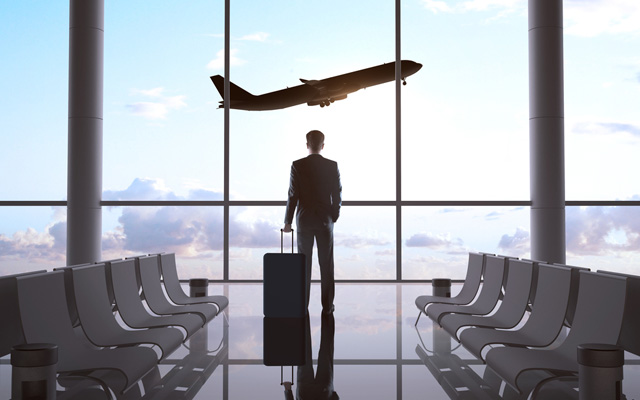If business travellers were able to accurately predict their travels with the help of analytics, would this ensure they avoid all possible potholes? CWT Solutions Group's Cedric Barbesier and Helene Buchfinck share their views
Sometimes, business travellers just run into bad luck. Their preferred flights have no seats available, so they have to take one with a 10-hour layover. The hotels close to the meeting location are priced out of budget. And when they get to the airport, they find their flight has been cancelled.
But what if it wasn’t just down to luck? What if travellers and travel managers could see potential obstacles before they turn into a problem – and then take corrective action?

A lot has been said about how predictive analytics can help companies save on their travel spend. But there are also many potential applications in creating a more stress-free and productive experience for business travellers. Here are three examples:
Predicting fluctuations in demand
Often, business travellers need to go somewhere at short notice, only to find that the city is booked solid. There might be a big conference or major sporting event taking place, or it could just be prime tourist season.
Their regular hotels – the ones near the branch office with good transport links and business facilities – are more expensive due to peak demand and priced well above the rate cap set by their company. This means they’ll probably spend a lot of time reading reviews and weighing alternative options in the hope of finding something that looks halfway decent and still falls within their travel policy. And because these options might be further away from where they need to be, they’ll waste time getting around too.
Predictive analytics could help travel managers anticipate changes in demand and introduce variable rate caps. Algorithms will predict price increases, and rate caps can be raised accordingly. At the same time, rate caps could be lowered during the off-season when prices go down. So if an employee’s traveling to Madrid during the UEFA Champions League final, for example, they’ll have a few extra dollars to spend to get a hotel that’s convenient.
Predicting changes in supply
The airline and hotel industries are rife with change. Mergers and acquisitions, new alliances, strikes, bankruptcies, and a myriad other factors can change the options available to travellers.
With the power of data science, companies can get better at predicting how these changes in the supplier landscape will affect their travel programs, and minimise the impact on their travellers. CWT Solutions Group is already experimenting with such algorithms.
While recently carrying out a supplier review for a client, we identified that their preferred airline was about to decrease the number of flights it operated between Paris and Hong Kong, one of the client’s top routes. We gauged how much prices on the route would increase because of the reduction in capacity, and what this would mean for the client’s travel spend.
We also analysed whether it made sense to change preferred carriers. For instance, moving to a different airline could result in a drop in traveller compliance, because many of the client’s frequent travellers had attained a high status and were loyal to the existing airline.
After conducting a thorough analysis, a decision was taken to blacklist the preferred supplier and choose an alternative. The client did inflight product review of the new airline to ensure it was up to scratch, and they negotiated frequent flyer status matching to ensure their travellers wouldn’t lose their perks as a result of the switch.
In this instance, predictive analytics helped a company take a more proactive and forward-looking approach to safeguarding their program in the face of a changing supplier landscape.
Predicting flight disruptions
Flight delays and cancellations can be a miserable experience. In fact, research by CWT found that delays are among the biggest stress triggers for business travellers. The good news is that this, too, is a problem that the data geeks are working hard to solve.
There are solutions already on the market, which use predictive analytics to identify delay patterns across flights to forecast disruptions. They factor in things like the historical on-time performance of an airline, seasonality, flight timings, flight paths and air traffic, congestion at various airports, and weather forecasts. With this information they can predict the probability of a delay occurring, as well as the length of the delay.
Savvy travellers might know how to avoid some of these problems. They might, for example, already be aware that a major sporting event is coming up in a city they plan to visit. But travel isn’t a routine occurrence for everyone, and even the most road-weary business traveller won’t know everything.
Predictive analytics holds great promise for business travel, in that might provide new answers to one of our industry’s perennial conundrums – how to create a more pleasant and productive traveller experience while saving money at the same time.
 Cedric Barbesier (right) and Helene Buchfinck (left) are part of CWT Solutions Group, the consulting division of CWT, the global B2B4E travel management platform.
Cedric Barbesier (right) and Helene Buchfinck (left) are part of CWT Solutions Group, the consulting division of CWT, the global B2B4E travel management platform.
Barbesier is director of global digital products. He is responsible for managing CWT Solutions Group’s suite of data products, including its digital reporting catalogue, CWT Travel Consolidator, and Business Unit Scorecards.
Buchfinck is senior manager of global presales, data & analytics. She helps companies understand how they can use data and analytics to generate a greater return on investment on their business travel spend while creating a better experience for their travellers.





















